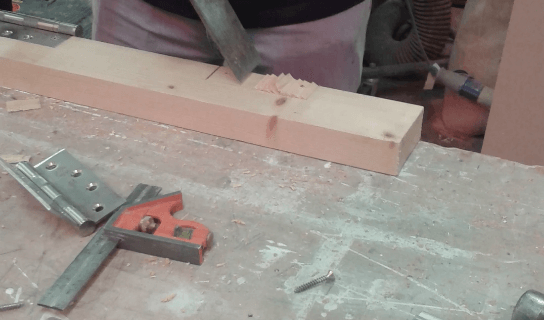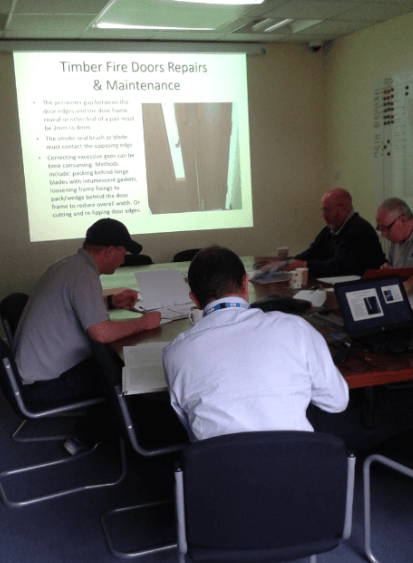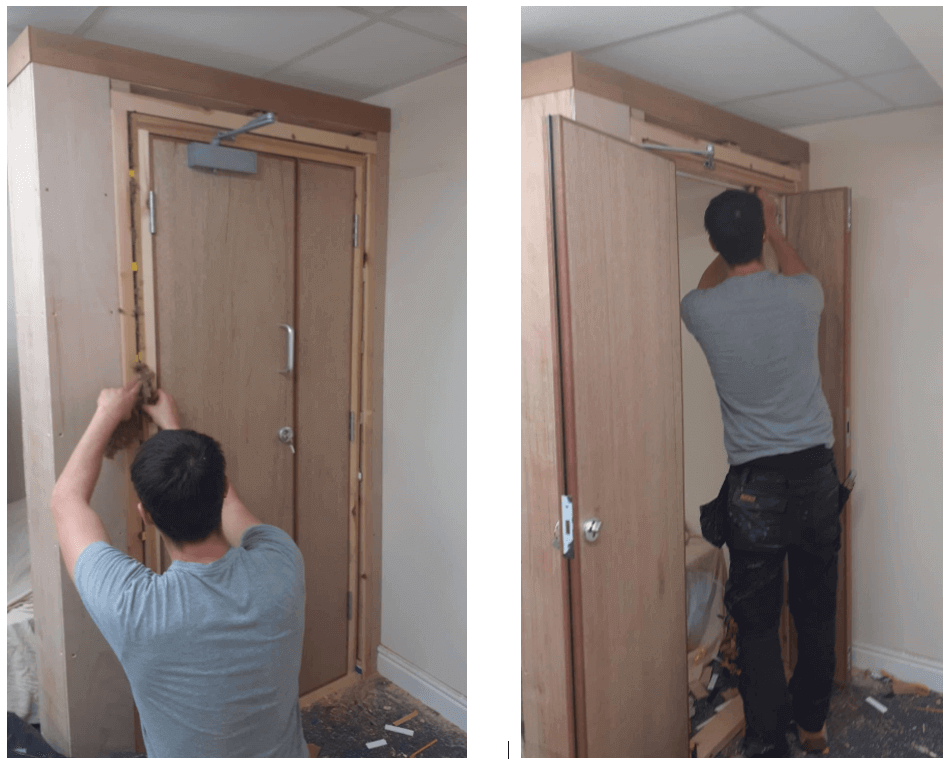With the start of this New Year, the fifth since the Grenfell Tower tragedy, more and more of us will be looking at training courses to enhance our skills and improve our competence.

Recent years have seen the choice widen in terms of training for those working with fire doors and this has to be good news because usually wider choice creates competition amongst training providers and this should hopefully drive up quality, not just drive down prices.
In this article, we will look at the various mediums for training delivery and what should be included in a good training programme. Starting at the beginning we must acknowledge that there is currently no legal requirement for an individual to undertake dedicated training before they install, inspect, maintain or repair a fire door. Whether this is a good thing or a bad thing can be left for debate elsewhere but I suspect that, just like third-party certification schemes for fire doors, action by UK Government to make such training mandatory is unlikely.
However, there have already been moves within the fire safety world to encourage requirements for the demonstration of proof of competency and this is clearly a good thing so long as these moves really are about raising quality and don’t cause competent people to be excluded because of high prices, unnecessary protocols or a combination of both. A closed shop will not drive up standards, it will drive them down because quality people won’t buy in they will instead ship out. So among the key requirements for good training will be affordability and accessibility for those with the necessary background in fire doors and fire safety.
With that last thought in mind, we must all acknowledge that fire door installation works, maintenance works and inspections are not tasks for the inexperienced. Minimum entry requirements for applicants should be required because to take a person without relevant experience and put them on a short internet-based course or just a day in a training room will not equip them to go out and install, inspect, maintain or repair fire doors. Fire doors are potentially life-saving safety devices and are deserving of attention by suitably skilled and experienced competent persons. Furthermore,

timber-based fire doors have very different characteristics to composite fire doors and metal fire doors so when a training programme claims to make a person competent to work with all fire door types, tread carefully.
Which is the best medium for delivery of the training?
This will often be a case of horses for courses. Some people will be naturally more suited to remote study whereas others will be far better off in a training centre environment. So, anybody looking for a suitable fire door training package in the UK is well advised to look for the training programme that suits their individual needs. Be that remote study, classroom-based study, or a training programme that includes both.
In terms of remote study courses, self-motivation will certainly be necessary and providers of these training programmes should make themselves available to offer support for learners when they need it. By attending a training centre learners will benefit from being able to ask questions during the training and this brings us to another important matter. If you are going to invest in fire door training, make sure you ask to see the trainer’s experience and credentials; this will satisfy you that the training programme is what you need rather than just a quick route to a certificate.
As with most things in life, the more you put in the more you will get out. Depending on an individual’s existing level of competence, theory-based learning that includes or has further practical training and assessment available is more likely to provide a better outcome and assurance of competence than just the theory-only element. Indeed, some training programmes such as Fire Door Inspector Training must include practical training and assessment. Only the very experienced are likely to benefit from fire door inspection training that is theory-only or internet based. Indeed, we should encourage fire door installers to go on to take a practical assessment after completing theory-based training.
Training course content

It’s a case of the more the better here. Even the basic Fire Door Awareness courses should explain the role of the fire door in a building, fire and smoke compartmentation and fire door law as well as the relevant technical aspects to do with fire doors. Clearly, the more in-depth training programmes will have much greater content including standards, regulations, guidance, certification and how to access more useful resources as well as much more technical information and details of the essential and non-essential fire door components and products.
Another key requirement of a good fire door training programme is continued, post-training access to the training materials and content. Even a professional fire door inspector, installation operative or maintenance operative should not be expected to work with fire doors every day of the week and remember every single thing – they should not need to be a walking encyclopedia.
There will come a time when a trained and competent fire door installer, inspector or maintainer will want to check something and consult the training materials – this is natural and to be expected. So before you decide which fire door training programme to choose make sure you will be able to access the training materials and content in the future and after you have completed the fire door training course.

Research before you buy – contact them first
So, now that there’s a wider choice of fire door training, use that to your benefit, shop around and find out which training programme best suits your needs. Call them or send an email to the training centre to discuss your requirements and find out what experience and credentials the training provider holds. If you choose wisely you should find what you need the first time around.
